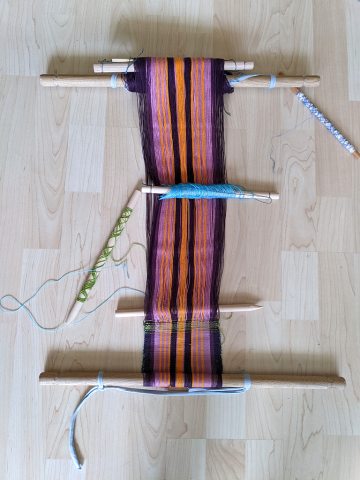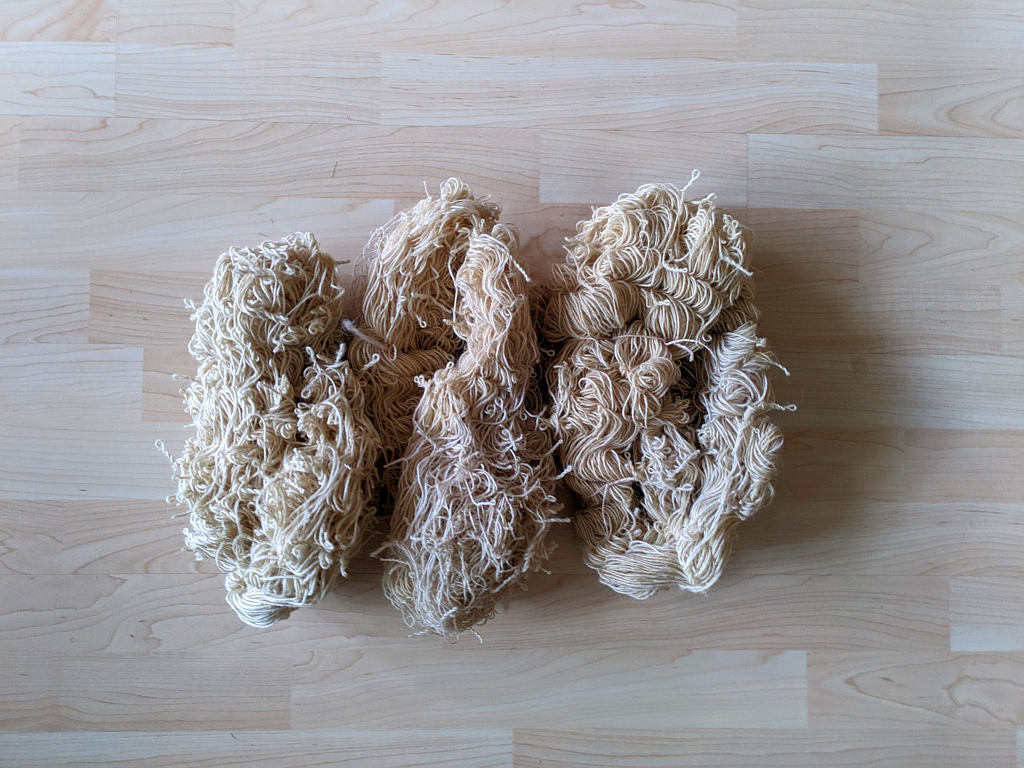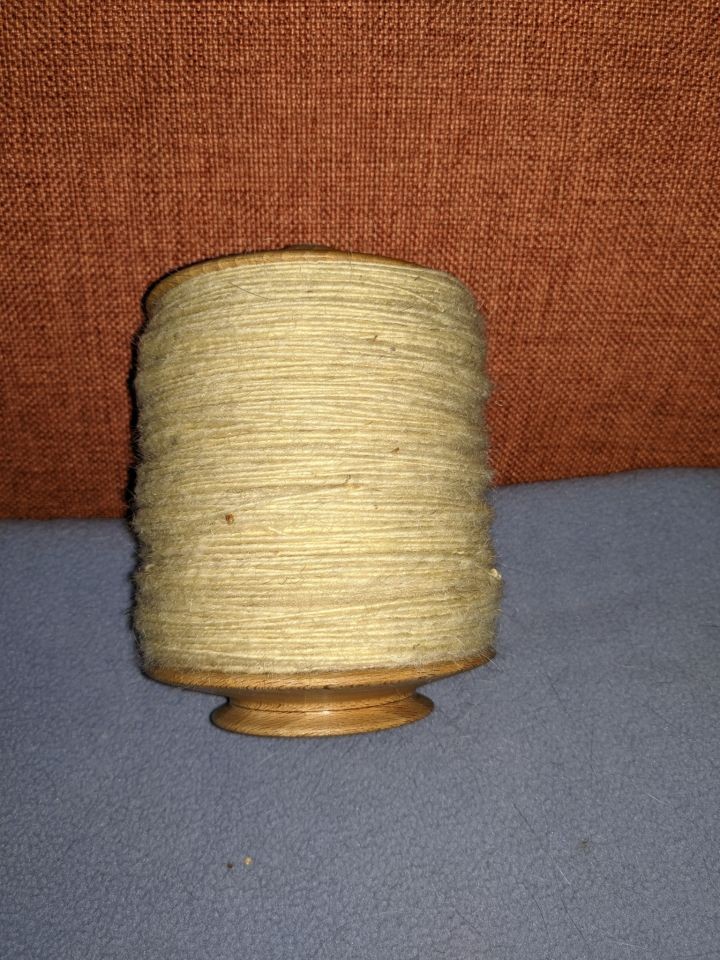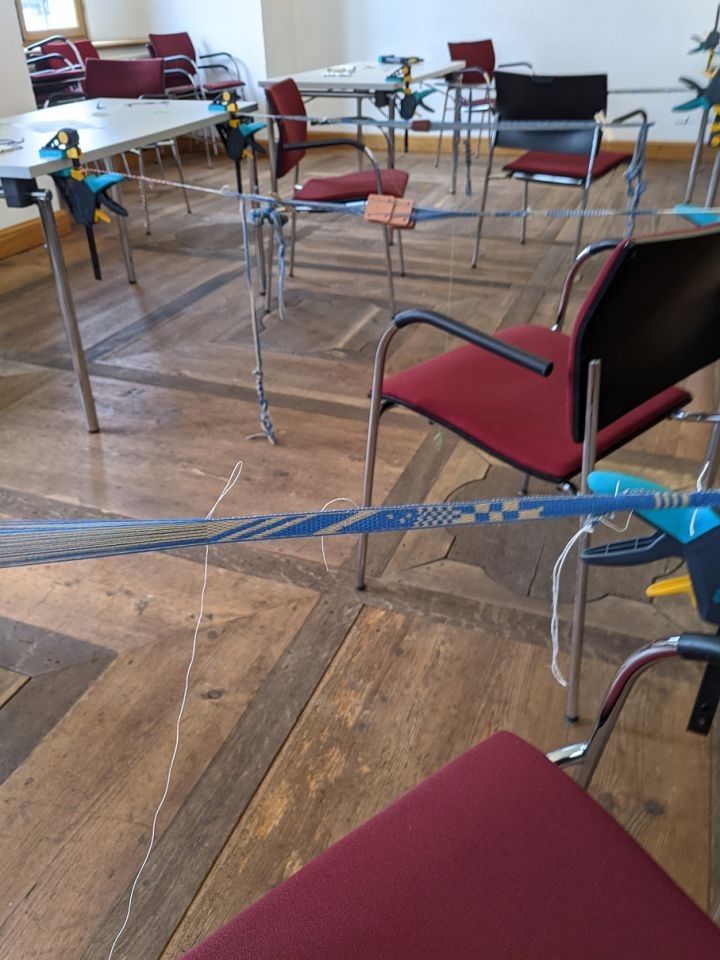Spinning speeds are a topic (or a question) that comes up again and again - and it is, like all questions about craft durations and times needed and work speeds, a difficult one.
To start off by stating the obvious: There's no cut-and-dried formula for saying how long task X will take when we're talking about crafts. That is even true for modern craft works, where there are machines to help with (and often reduce) work time. Usually, when you are experienced, you can estimate how long something will take, but complications can arise at any time. As soon as more unknown elements enter your task equation, things get more squishy as well. And of course a lot depends on details such as the fineness of a textile, or the finishing of some woodwork (raw surfaces, or do they get sanded, maybe sanded more than once, or maybe then oiled or laquered as well?).
That said, when we're turning towards textiles, spinning is a considerable chunk of the work time needed to make a woven fabric. And of course your spinning time needed will depend on a lot of factors again - type and preparation (especially prep quality) of your fibre, the amount of twist necessary (which depends on what amount of twist you're going to and the thickness of your yarn), and the tool you are working with, and the proficiency of the spinner. Because we're talking serious amounts here when spinning for fabric, a 10% difference in speed will mean quite a substantial difference in time.
Things that should not be forgotten as well are prep time for the fibre (but that's another can of worms, and we'll keep that nicely closed, with the lid weighed down, and stashed in the back of a shelf in the dark for now) and post-processing of the yarn. Reeling off will also take a bit of time, as will setting the twist - a must-do if you're working with high-twist yarns in the historical style. They are not taking too long each, but they will add up, too, especially if you are spinning smaller portions at one go, because your bobbin is small or your spindle has limited capacity.
Finally, when you are calculating the amounts needed for a fabric, you have to allow for the amount that gets eaten by the initial shrinkage, when you take the raw piece off the loom and wash it for the first time. (For me, that is part of the weaving process, because no textile ever is finished before it's been wet and dried again once.) And, of course, my personal frenemy: the loom waste.
Loom waste is the bits of warp thread that you have which cannot be woven. You have a bit of loom waste with almost every weaving process; in the few special weaving variations that you do not get any loom waste at all, your price for this is more hours spent by doing the last centimetres of weaving with a needle, without the help of your normal method of opening a shed. It's entirely possible, but not something that's done quickly and easily (and it would be quite interesting to compare the amount of time needed to do that, and the amount of time spent on spinning for the loom waste, and compare those two). Loom waste, depending on your loom type, will range somewhere between about maybe 70 cm if you're lucky and have an economic set-up, or 150 cm if your loom is rather, um, hungry. That's per warp thread, mind you - so if you have 1000 warp threads (which would be a 10 thr./cm fabric in 1 m raw width, nothing out of the ordinary and actually rather on the narrow side of things), you're spinning a whole klick just for the waste bin. (You can use the cut-offs for stuff, of course, but they will definitely not be part of the fabric.)
There are quite a few statements about how quickly some people spin around the Internets, and some of them seem rather, um, outlandish to me. The Guinness World Record that has been documented is 99,45 m in one hour; unfortunately there's no statement about the tool used for this. There's people claiming that they spin more than 500 metres in one hour... which to me sounds not feasible, to be honest.
There's two to three limiting factors to how much you can spin in a given amount of time: Your rate of twist insertion (that's the rotational speeds you can achieve with your tool); your drafting speed; and - if you are spinning on a hand-spindle or spindle wheel or some other tool that does not automatically wind up your yarn, your wind-up speed.







